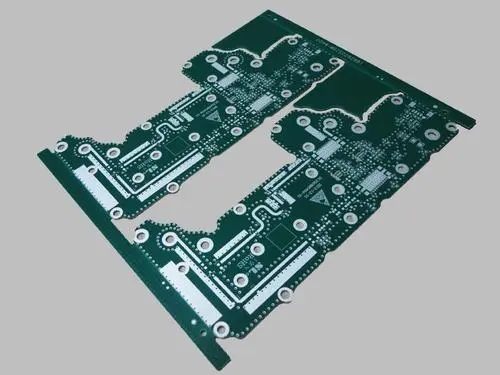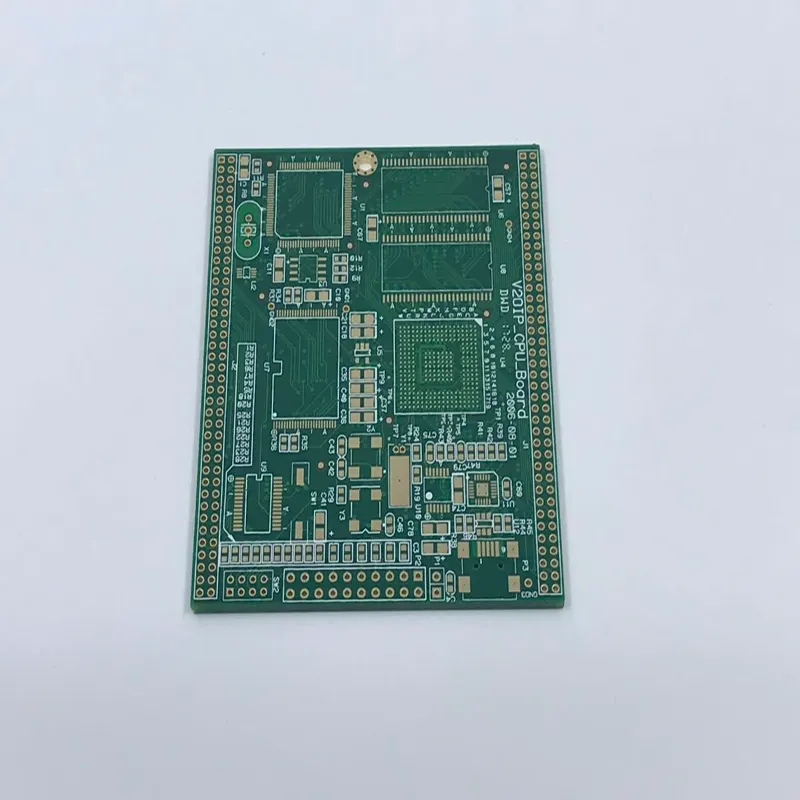
A classIC PCB temperature curve system consists of the following components
PCB manufacturer, PCB designer and PCBA manufacturer will explain a classic PCB temperature curve system consisting of the following components
·Data collection curve instrument, which passes through the middle of the furnace and collects temperature information from PCB.
·Thermocouple, which is attached to the key components on the PCB, and then connected to the accompanying curve meter.
·Thermal insulation protection, which protects the curve meter from being heated by the furnace.
·Software program, which allows the collected data to be viewed in a format to quickly determine the welding results and/or find out the out of control trend before the out of control adversely affects the final PCB product.
3、 Thermalcouples
K-type thermocouples are most commonly used in the electronic industry. There are various technologies to attach thermocouples to PCB components. The method used depends on the type of PCB being processed and user preference.
4、 Thermocouple attachment
High temperature soldering tin, which provides strong connection to PCB. This method is usually used for operations where a special reference plate can be sacrificed for making curves and checking processes. It should be noted that the minimum tin content should be guaranteed to avoid affecting the curve.
Glue, which can be used to fix thermocouple on PCB. The use of glue usually results in a rigid physical connection of the thermocouple pair assembly. Disadvantages include the possibility that the adhesive may fail during heating, and residues left on the assembly when it is removed after the curve is made. Also, care should be taken to use the minimum amount of glue, as increasing the thermal mass may affect the results of the temperature profile.
Kapton or aluminum tape, which is the easiest to use but the most unreliable fixing method. The use of tape as a temperature curve often shows a very uneven curve, because the thermocouple connection point is lifted from the contact surface during heating. Easy to use and leaving no residue affecting the assembly make Cape ton or aluminum tape a popular method.

The pressure type thermocouple is clamped at the edge of the circuit board, and the connection point of the thermocouple is firmly contacted and fixed to the assembly for which the temperature curve is being made using elastic force. The pressure probe is fast and easy to use, and is not destructive to PCB.
5、 Placement of thermocouples
Because the outer edges and corners of an assembly are heated faster than the center, and the elements with larger thermal mass are heated more fully than those with SMAller thermal mass, it is recommended to use at least four thermocouple locations. One thermocouple is placed on the edge or corner of the assembly, one is on a small element, the other is in the center of the plate, and the fourth is on a higher mass element. In addition, thermocouples can also be added to other parts of interest on the board, or to components most at risk of temperature shock or temperature damage.
6、 Reading and evaluating temperature curve data
Solder paste manufacturers generally have recommended temperature curves for their solder paste formulations. The manufacturer's recommendations should be used to determine the best curve for a particular process and compare it with the actual assembly results. Then steps may be taken to change the machine settings to achieve the best results for special assembly (Fig. 3).
For PCB assembly manufacturers, there are now new tools that make it easy to design target curves for a specific combination of solder paste and reflow furnace. Once designed, this target curve can be SIMply calLED by the machine operator for this special PCB assembly and automatically run on the reflow soldering furnace.
7、 When to make temperature curve
When starting a new assembly, it is particularly useful to make a temperature curve. The furnace setting must be determined to optimize the process for high-quality results. As a diagnostic tool, the curve tester is invaluable in helping to determine the poor qualification rate and/or high rework.
The improper furnace settings can be found by making temperature curves, or it can be ensured that these settings are appropriate for assembly. Many companies or factories make temperature curves on the standard reference plate, or use the quality management curve meter of the machine every day. Some factories make temperature curves at the beginning of each shift to check the operation of the furnace and avoid potential problems before problems occur. These temperature curves can be stored as a hard copy or in electronic format, and can be used as a part of the ISO plan, or used for SPC statistical process control of machine performance over the entire time.
The assembly used for temperature curve should be handled carefully. The assembly may be degraded due to improper handling or repeated exposure to reflux temperature. The curved plate may delaminate over time, and the attachment of thermocouples may become loose. This should be expected, and the curved equipment should be checked before damage occurs in each operation. The key is to ensure that the measuring equipment can obtain accurate results.
8、 Classic PCB temperature curve and machine quality management curve
Although the most common type of temperature curve involves the use of an operating curve meter and thermocouple to monitor the temperature of PCB components, the temperature curve is also used to ensure that the reflow soldering furnace operates continuously with the best settings. The existing built-in machine temperature curve meters provide daily detection of key reflux furnace parameters, including air temperature, heat flow and conveyor belt speed. These instruments also provide an opportunity to quickly find any out of control trend before the out of control factors affect the final PCB assembly quality. PCB manufacturers, PCB designers, and PCBA manufacturers will explain to you that a classic PCB temperature curve system consists of the following components.









